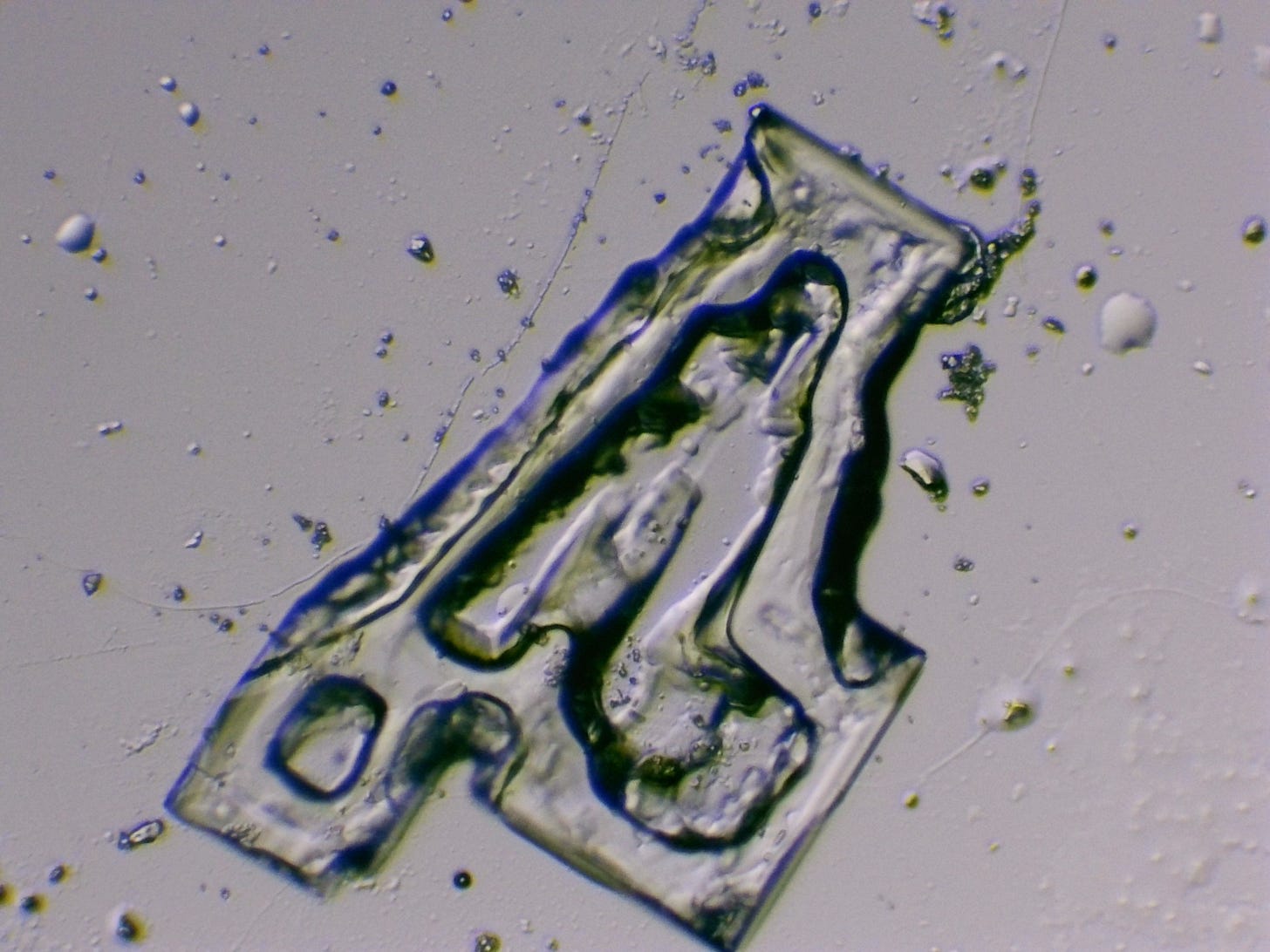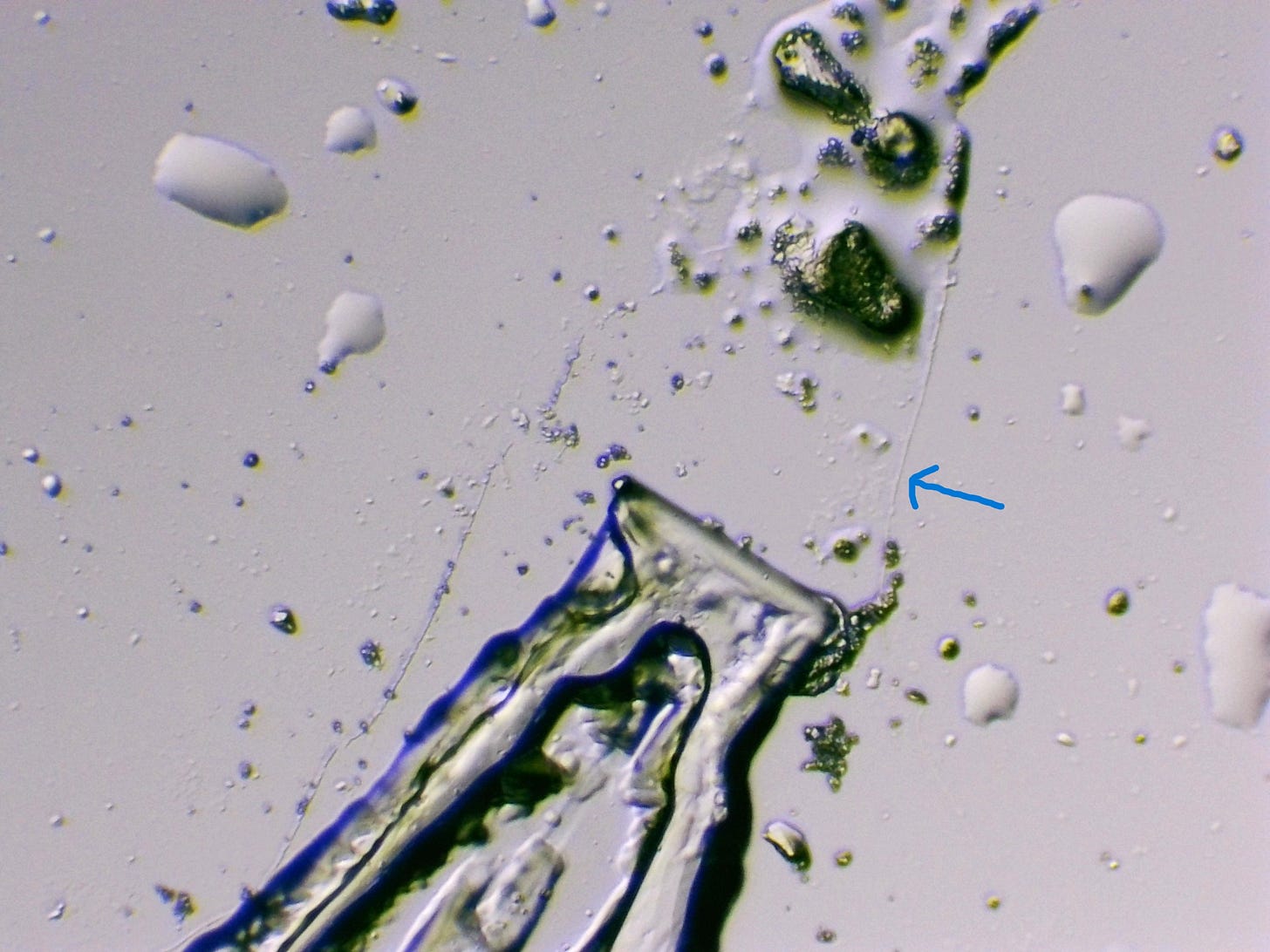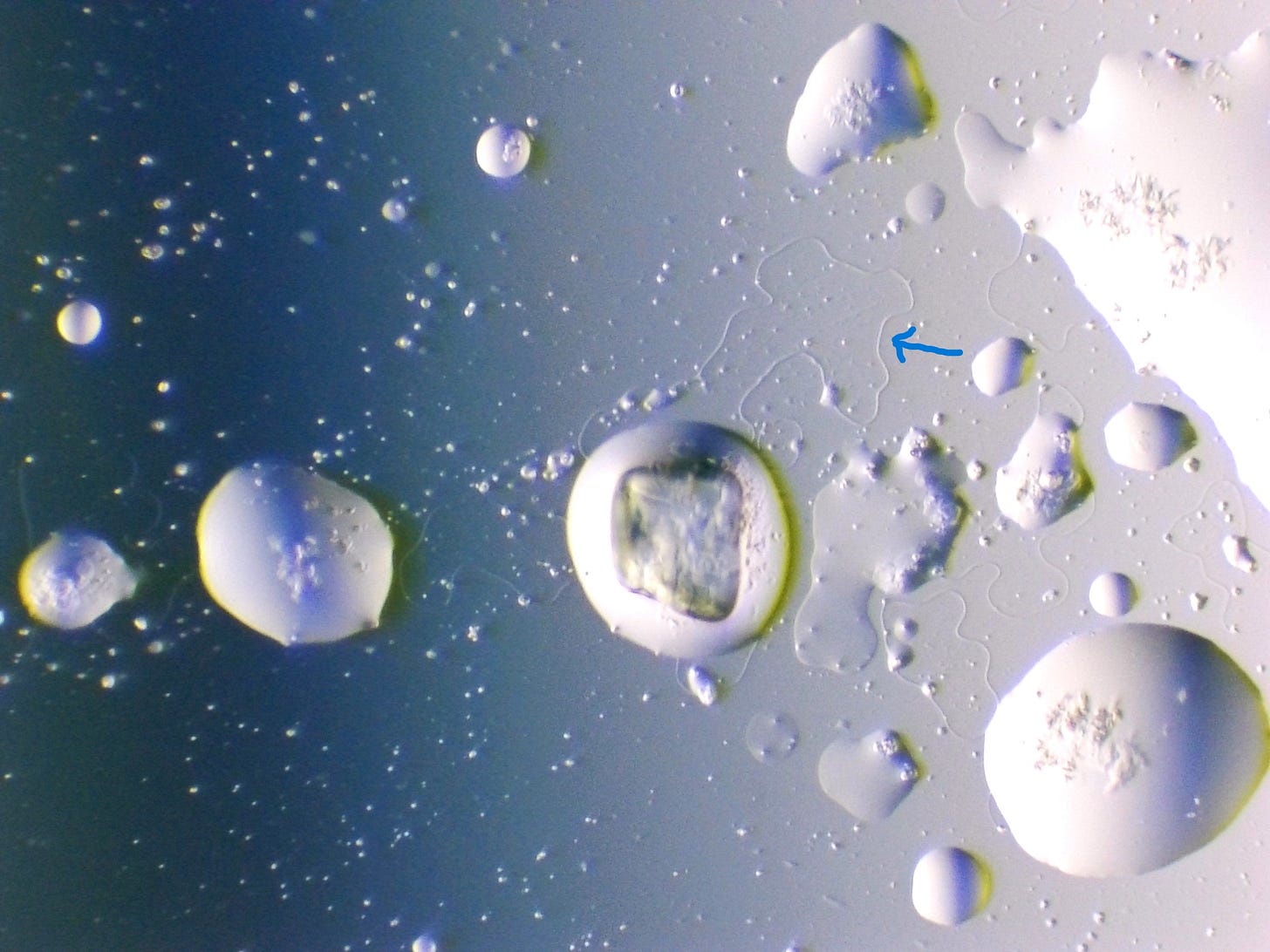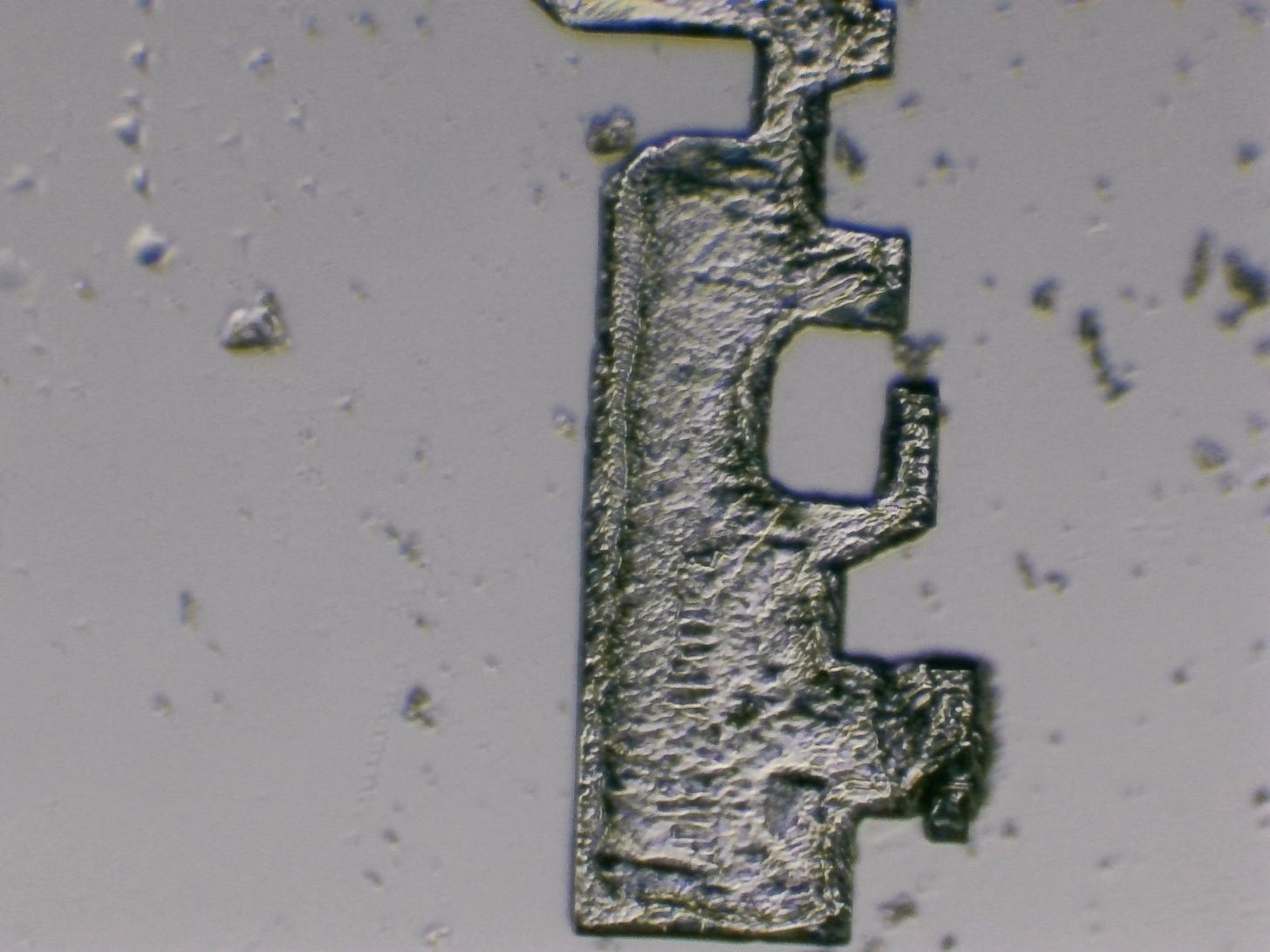asthma medication part 2
another look at budesonide
Just a quick update on the budesonide I put on a slide 5/16. It has already changed quite a bit from what I was seeing yesterday. The ribbons didn’t start showing up until day 2 or 3 and the square and rectangular crystals didn’t start showing up until day 4 or 5. I don’t have much else to add at this point, so I will just post the pics and videos.
My entry level microscope doesn’t come equipped with dark field or a filter holder to place a DIY filter into, and so I’m experimenting with oblique lighting until I can find a better solution or upgrade to a more expensive microscope. Please visit my Patreon page if you are interested in funding that endeavor. I’ll likely either upgrade to a Leica or an Olympus. I currently use Amscope. In the video below you can faintly detect what some are calling “quantum dots” that appear to blink if you look closely. Ana Mihalcea and others have very clear footage of this activity on their Substack pages.
Below is the beginning of what may become a more complex chip structure.
If you look closely you can see the outline of a very thin plate of material that is completely transparent and difficult to see. I drew a blue arrow pointing to the edge of the clear material. I have a hunch that it may be hydrogel.
Playing around with oblique lighting to get a sense of the depth and structure of what may become a fully evolved chip.
It’s hard to tell how much of this material is the main active ingredient of budesonide (micronized budesonide) and various inactive ingredients such as citric acid and salt, but there are telltale signs of unusual activity such as crystal structures associated with either ribbons or hydrogel. (Blue arrow pointing to the edge of what is believed to be hydrogel). What other researchers have noticed is that hydrogel often appears with wavy lines at its edges that become more straight with time. I’ve personally noticed transitional states where the lines are serrated like a knife with both curvy and sharp or straight lines.
A closer look with a 40x objective (I believe at 400x magnification total).
If you look closely at the edges of the transparent hydrogel plates you may notice a series of transparent dots aligned in interesting formations at the edges of the plates. In the below image, the second plate at the bottom looks as though the dots are beginning to coalesce into a square shape, possibly beginning to form a chip. So far, I haven’t been able to record video longer than 3 hours at a time to attempt to catch the formation of a chip in real-time.
Below are a series of yet even more unidentified structures that vaguely resemble electronic components. These structures are more evolved than they were a few days ago and likely are in transition towards even greater complexity.
More images coming soon. Thanks for your support.







